Lantana, Tropical Lantana, Shrub Verbena, Yellow Sage, Jamaica Mountain Sage, Spanish Flag, Big Sage, Wild Sage, Red Sage, White Sage, Tickberry, West Indian Lantana, Umbel Laterna
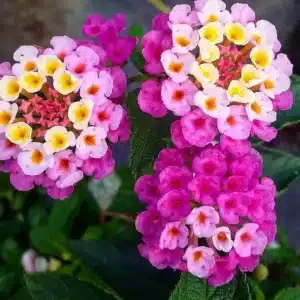
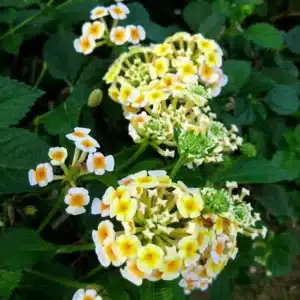

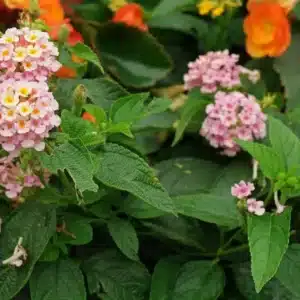

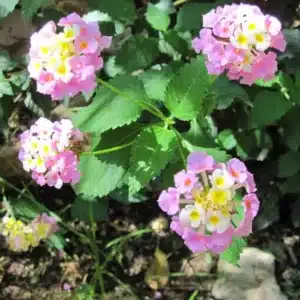
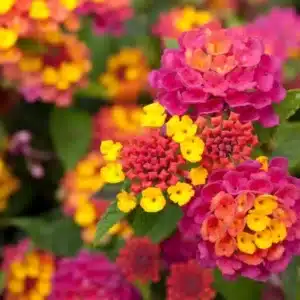
‘Lantana’ thrives with excellent soil drainage and full sun, requiring six to eight hours of full sunlight daily. This plant prefers slightly-acidic soil, which can be improved by providing a layer of pine needles as mulch. Due to the plant’s tendency to spread freely, it may be wise to install garden barriers to prevent it from taking root in areas where it is not wanted. Some nurseries now have sterile varieties of ‘Lantana,’ which are unable to produce seeds, and therefore cannot become aggressive. This plant is toxic and may cause stomach illness or vomiting if consumed by cattle, sheep, horses, goats, dogs, cats, or small children. ‘Lantana’ responds well when planted into soil that has been enriched with organic matter. Because contact with the rough leaves may result in dermatitis, the wearing of gloves is recommended when handling this plant. ‘Lantana’ is easily-propagated in winter by root division, which can be accomplished by gently lifting and separating a section of root, which must immediately be transplanted into moist soil. Additionally, the plant can be propagated by taking a four-inch-long stem cutting. All except the top leaves should be removed before gently pressing the cut end of the stem into moist growing medium. The cutting must be kept moist and placed into indirect sunlight until roots form. Seed should be planted in the spring into moist soil, lightly-covered, and well-watered until seedlings become established.
‘Lantana’ flourishes when provided with six to eight hours of full sunlight daily and planted into well-draining soil. Young seedlings should not be allowed to dry out, but once established, this plant prefers dry conditions and requires little maintenance. During the heat of summer, ‘Lantana’ will appear more lush and flower more abundantly if provided with a deep watering once every week. The top inch of soil must be allowed to dry between each watering. Overhead sprinkling should be avoided, whenever possible, thereby keeping the leaves dry to prevent fungal disease. ‘Lantana’ benefits from mulch in late autumn to protect the roots from the winter cold. In cooler areas, the plant must be over-wintered indoors. near a sunny window, until warm temperatures return.
If desired, ‘Lantana’ may be fertilized once, in the spring, with the application of a slow-release, 10-10-10 fertilizer. It is important to carefully read and follow the directions on the product label. Excessive fertilizer may weaken the plant.
‘Lantana’ may be lightly-shaped once a month to maintain an attractive, mounded form. In early spring, the plant should be cut back to about six inches above the ground to allow fresh, new growth to emerge. At this time, any unsightly, dead stems should be removed.
‘Lantana’ is not typically affected by any serious pests or diseases. Fungal diseases may affect the plant in overly-moist conditions, especially with insufficient sunlight. If overwatered, leaf spot or stem rot can occur. These are preventable by making sure the plant receives full sun and soil with excellent drainage. Occasionally spider mites and whiteflies make their appearance, but these pests can be rinsed away by a strong spray of the hose. ‘Lantana’ is highly sensitive to insecticidal soap sprays. These should never be applied because they can actually kill the plant.














